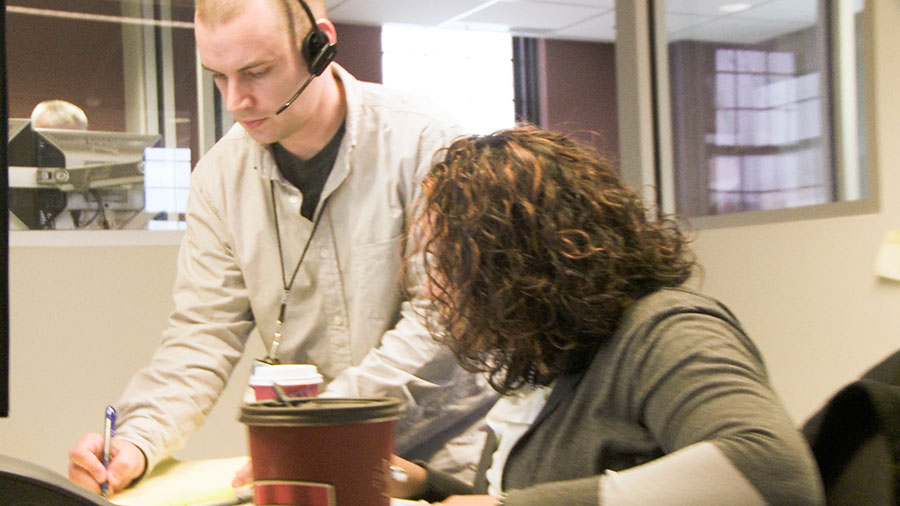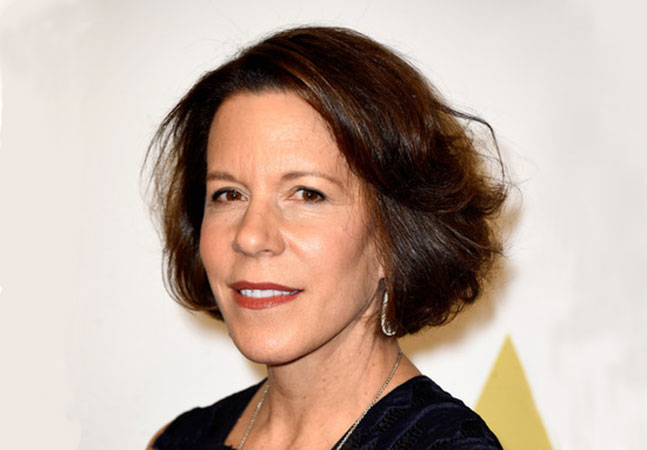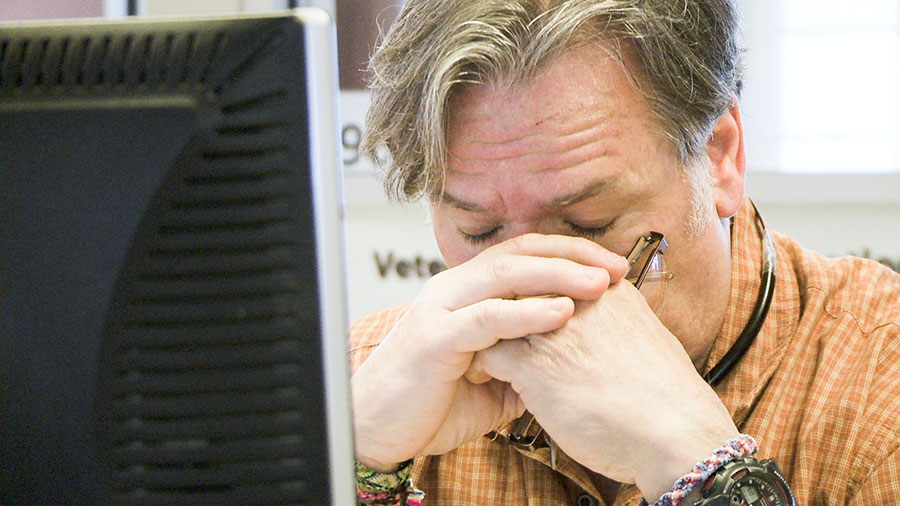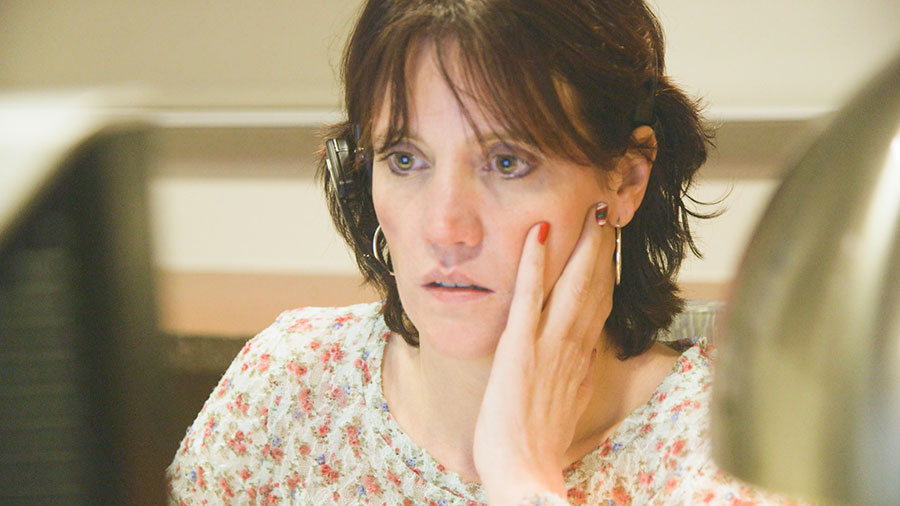
America’s veterans are killing themselves at a rate of nearly one every hour, a shocking reality when you think of the number of younger men and women returning home from recent deployments in our most recent wars in Iraq and Afghanistan. The realities of combat can be so difficult to bear that veterans often return to their hometowns and their families feeling alone in this world, their problems seemingly comprehendible to no one but themselves. But one call center in Upstate New York is attempting to help these men and women in their times of deep crisis by lending an ear to listen.
The Veteran’s Crisis Line Center is a service that is open around the clock to provide support, guidance and hope to active and retired service men and women struggling with emotional and psychological problems. Ellen Goosenberg Kent received a small amount of funds from HBO to make Crisis Hotline: Veterans Press 1, a short documentary film that follows several of the Crisis Line Center employees who tirelessly invest their time and emotional energy in each caller, sometimes interfacing with local law enforcement to insure a veteran’s immediate personal safety.
We reached out to Goosenberg Kent via email to ask her about the challenges of filming just one side of a phone call, and why she hopes her film can bring attention to a vital, life-saving resource.

How did you learn about the Veterans Crisis Line Center?
We wanted to bring attention to the suicide crisis among veterans, to help people understand it better, and if possible, to offer some ideas about prevention. [We wanted] not just to illuminate the problem but to offer a ray of hope for veterans and their families. Many months of research turned up the hotline, which seemed both immediately promising and ultimately impossible as a place to film. Fortunately, we were able to get access and come up with a way to make it work as a documentary.
Explain the appearance release process for this project. Did the troubled veterans who were calling in for help know that their situation was being recorded? Did any responders working at the center refuse to be filmed at work?
A great question and precisely the challenge. We met with the responders and emergency technicians as a group and asked for volunteers. Many of them recognized that participating in the film could raise the profile of the hotline and encourage veterans and family members to call, which was then and still is an important goal. The callers did not know that we were filming the responder’s side of the call and that it might become part of a documentary. Their voices were never recorded and we never knew their identifying details. In this way, we were able to preserve their anonymity and privacy, which was a condition of gaining access to the call center.
Lately, there have been a lot of poignant documentaries about US veterans: Stray Dog, Hell and Back Again, and Poster Girl are three films from the past four years that come to mind. Why do you think there has been such a recent focus on veterans in documentary films?
This is a really important and welcome development. So many of us are insulated from the experiences and emotions of veterans and their families. Documentaries have had a major role in closing that gap. We are at war: thousands of men and women are being deployed and [are] returning home, some of them with invisible but serious brain injuries and other psychological wounds. As filmmakers, we want to sensitize people to the importance of understanding both the unique experience of veterans and also our common ground. Michele Obama has focused on the importance of integrating veterans into the community when they return [and] reaching out to them. Our film highlights a group of heroic people who have made it their mission to connect with veterans, to let them know they’re not alone, and to offer them the help they may need to deal with the depression, loss and trauma that are the human costs of war.

Crisis Hotline is edited to make it as truly gripping as any fictional suspense film. It’s rare that a documentary can build such tension so genuinely. How did you decide the best way to pace your story in the editing room?
We chose the calls that moved us most, especially those where we were able to truly sense what was happening on the other end of the line. The calls that led to rescues or safety checks were inherently the most dramatic. It’s true that some veterans call the hotline just to vent, but we felt strongly that it would be more meaningful and more helpful to offer viewers—who might be family members, therapists or just concerned citizens—some insights into how seasoned, compassionate responders handle callers who are contemplating suicide or who have a plan to end their lives. After experimenting with more interview material between the calls and even opening up the film and leaving the call center to go home with responders, we decided to stay as vérité and fast-paced as possible, mimicing what it is truly like at the hotline on a busy day.
Was it a conscious decision on your part not to feature any situations that the responders were not able to confront and stop?
There were very few situations we witnessed where the responders were not effective. In the nine months we spent at the hotline, we were never aware of a situation where a veteran took his life while on a call. We know this happens, but it didn’t happen on our watch. There were disappointing moments when a responder was making a heroic effort and the caller wasn’t in a position to take a referral because he was homeless or just not ready. We wanted to show how powerful reaching out for help can be and to counter the stigma that seeking mental health services, as a member of the military, isn’t macho. Ideally, we were able to capture the bravery of callers who made the decision, in their moments of greatest need, to turn to someone who could offer a reason to keep on living.
From the way the film is edited, it doesn’t seem like a single camera setup. How many cameras did you have in the center at a given time? What kind of equipment were you working with in the Center’s offices?
We had one camera at first. It was the Sony FS700 and Tony Hardmon was shooting. We had a second smaller camera, the EX-3 that we had on hand for time-lapse shots and as a back-up, but we soon realized that in a rescue situation, having two cameras was critical in order not to miss anything.
How did you get funding for this project? Was this a commission from HBO, or did they come on board later in the production process?
HBO gave us a small development fee and after we reviewed the dailies from the first few days at the hotline, the network decided to fund the film at a minimal level. That was increased towards the end, to cover the scoring and soundtrack.

What was the most challenging thing you encountered while making this film?
The biggest challenge in making this film was trusting that we could tell our story by focusing on one side of a phone call, never seeing or hearing from the veteran or family member in crisis who was making the call. We wanted to convey the scope of the suicide crisis, to illuminate some of the reasons why veterans were feeling so desperate, and we wanted to offer hope at a time when all we were hearing in the media was that not enough services existed for veterans. That was true but at the same time, we didn’t want people to give up hope. We wanted them to know that a lifeline existed. And through that lifeline, many other avenues to connect to other veterans, to counseling, to housing, to job services, to family groups.
What has the road to the Oscars® been like for you? What are you working on now?
The Oscar® nomination is a tremendous shot in the arm for a documentary filmmaker. The recognition is beyond gratifying and it reinforces the reason we do this work: to make a difference, to provide access to lives and worlds the audience might never get to know. An Oscar® nomination is a great gift. And in this case, we truly feel that bringing attention to the crisis line and to suicide prevention can help save lives.
You can see Crisis Hotline: Veterans Press 1 at DocuDay LA, the IDA's annual celebration of the feature and short documentary films nominated for the Academy Award®. The film will screen at 11:25am on Saturday, February 21, at the Writer's Guild of America Theater as part of Shorts Program 1 with fellow nominees White Earth and Our Curse.
Katharine Relth is the Digital Communications Manager for the IDA. She has interviewed dozens of documentary filmmakers and written extensively about contemporary documentary and independent filmmaking for documentary.org, Documentary magazine, Indiewire and TribecaFilm.com
